Exciting opportunities to experience boat fishing off the North Devon Coast and beyond with new Ilfracombe based Charter boat Predator 2.


Torridge Rivers Association
President: Lord Clinton
Chairman: Paul Ashworth Secretary: Charles Inniss
Beeches, Sheepwash Beaworthy Devon EX215NW
e-mail: [email protected]
NEWSREEL: SPRING 2025
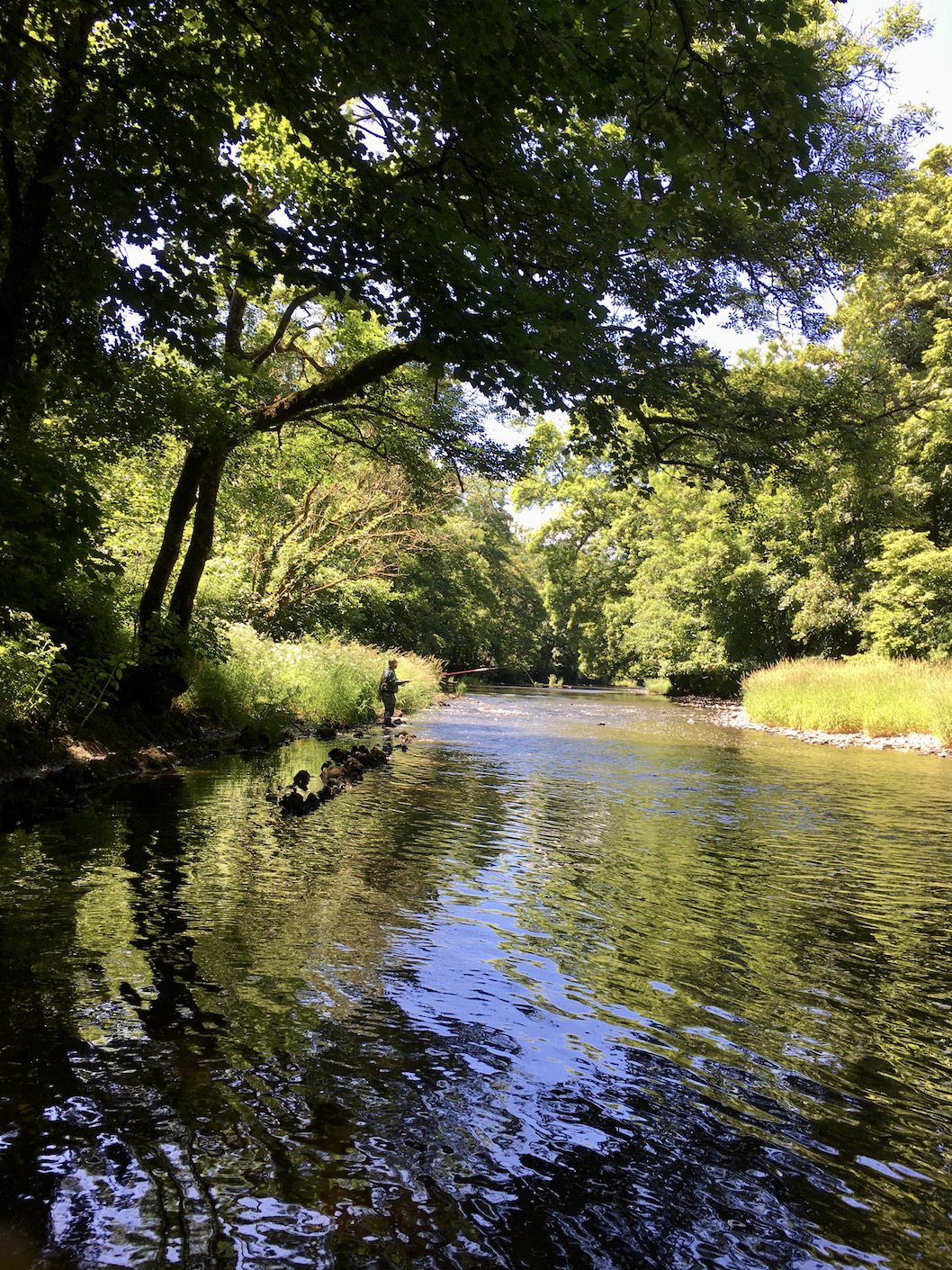
The season so far: it has been a more encouraging start to the season. March has been dry with the river clearing and falling only slowly. There have been three salmon caught all on the Lower Torridge including a superb springer of 15lb caught at Madeira on 2nd March. Towards the end of the month warmer weather has led to a rise in the water temperature and the brown trout have started feeding on the surface: a sure sign that spring is on the way.
The AGM: was held at The Half Moon Inn on Friday 21st March. It was an excellent informal evening enjoyed by all present. 33 members and guests attended. We were delighted that our President Lord Clinton and Lady Clinton were able to join us and also Izzy Moser from the Devon Wildlife Trust and our fishery protection officer Sam Fenner. The agm supported the proposal for subscriptions to remain at £20. The committee was re-elected “en bloc”. After the meeting we all enjoyed the usual excellent Half Moon buffet. Membership has increased from 87 to 94, which is very encouraging.
The Hatchery Project: has been a great success this year with about 33,000 swim-up fry ready to be stocked out in selected sites in the headwaters in the next 2/3 weeks. We were able to trap our broodstock from the fish pass at Monkokehampton Weir with relative ease at the end of November and by mid-December all five hens had been stripped and the eggs fertilised. The alevin started to hatch at the end of January and have grown on steadily with very limited mortality. The weather has helped: it has been a colder winter than average with the water temperature only once going above 10C
Sam Fenner: Fishery Protection Officer: was able to help trap the broodstock for the hatchery by providing access to the site and the oxygenated tank to transport the fish back to the hatchery. He informed the agm he was now the only fishery protection officer for the whole of Devon. In the 1980’s when Paul Carter was our fishery officer there were 24!! It was now more important than ever for all of us to be the eyes and ears of the river and report any concerns.
Westcountry CSI: (Citizen Science Investigation) is a scheme established by the West Country Rivers Trust that involves regular monitoring the water quality of our streams and rivers. Volunteers are needed to support the scheme. Our Association and The Devon Wildlife Trust are supporting the initiative and Duncan Betts (one of our committee members) has agreed to lead the project on behalf of our Association. A training day has recently been held at Hatherleigh and those taking part have been supplied with the necessary equipment. The Upper Torridge has had more than its fair share of pollutions in recent years so regular water quality monitoring is essential.
Beavers: there are beavers in the Torridge catchment!! For many years, with the support of the Devon Wildlife Trust, beaver colonies have been held in enclosed areas but there have been escapees, either by accident or design (I suspect the latter!!) with the result beavers are now widespread throughout the county. There are arguments for and against beavers. My concern is that like all rodents they can multiply very quickly and they have no predators Ten years ago a pair of beavers were introduced as a trial into the River Otter: now there are over 100 in that river.

ur
I was surprised how low the reservoir is so early in the season. This gives more open bank to fish but is perhaps concerning for the summer ahead.

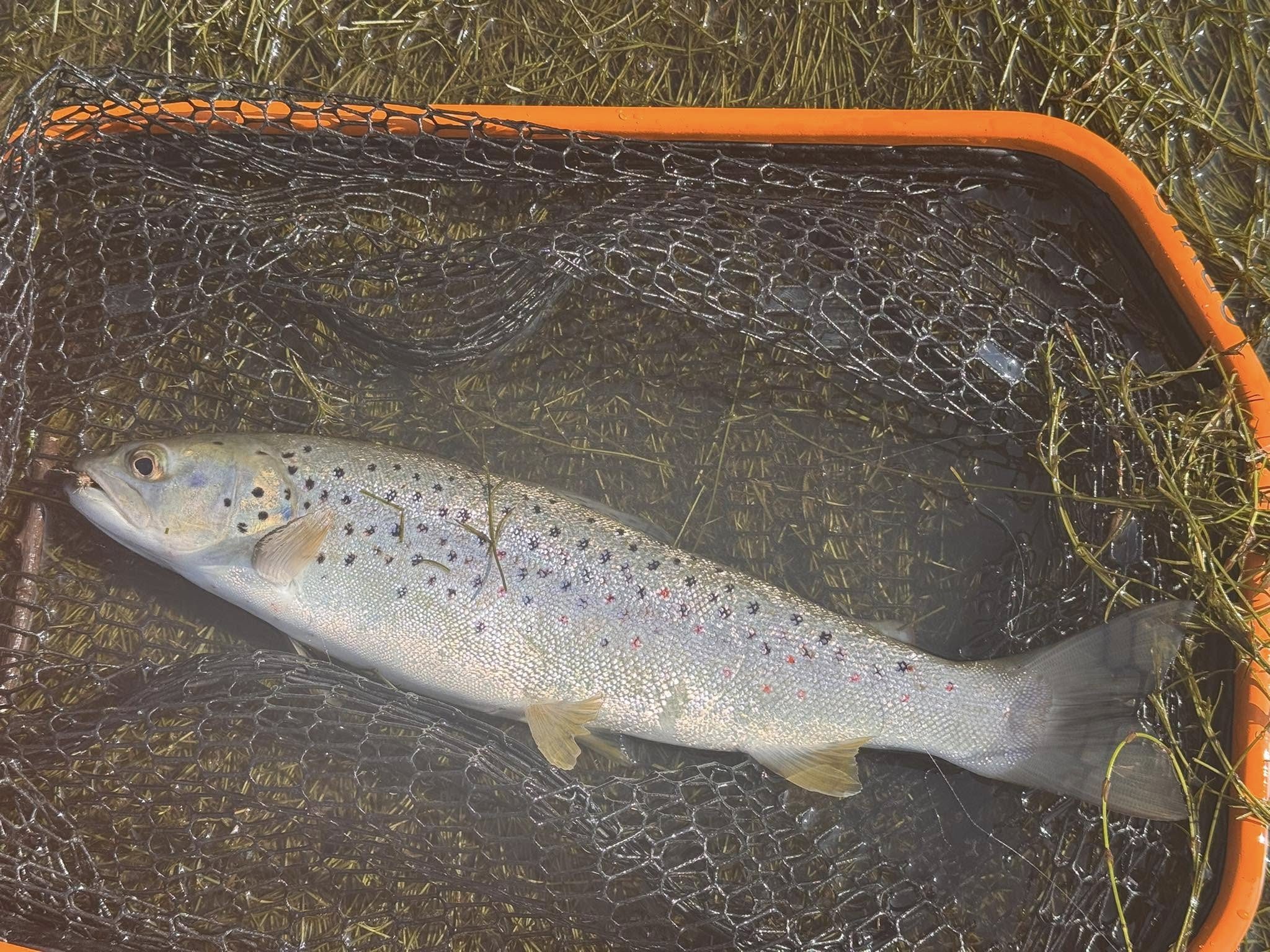

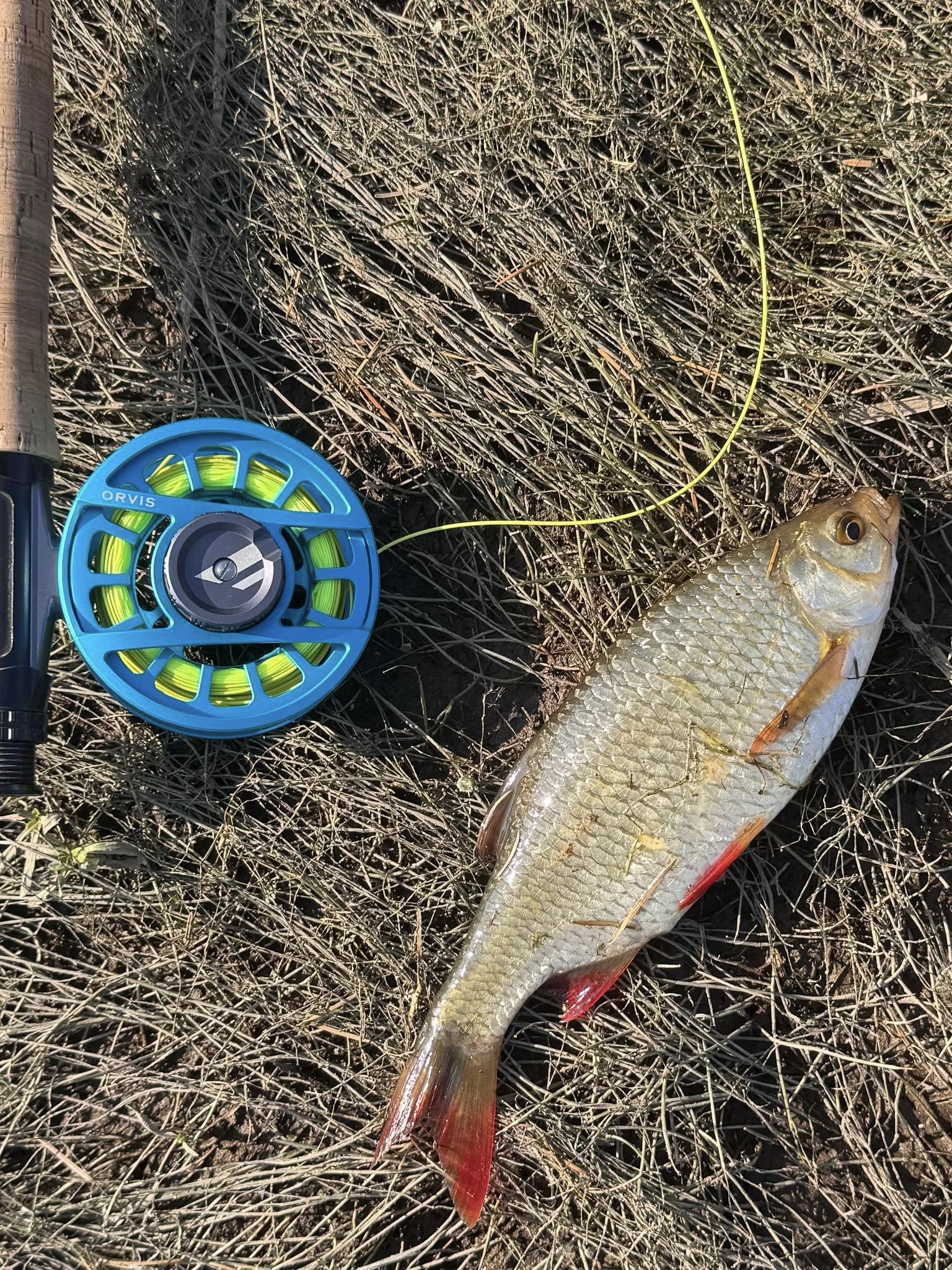


RIVER TAW FISHERIES AND CONSERVATION ASSOCIATION
NOTICE OF AGM AND ANNUAL FUNDRAISER – FRIDAY 28 MARCH 2025
The RTFCA AGM will be held at the Fox and Hounds Hotel, Eggesford EX18 7JZ on Fri 28 March 2025 commencing at 1845hrs.
Bar facilities and a Finger Buffet will be provided (Members are politely asked to make a donation for the buffet at the event)
Guest speakers will update on some exciting new projects taking place on the Taw catchment.
Some great and rare opportunities for fishing have been very generously provided in the fundraiser. We use all of the money we raise to fund or match fund projects on the Taw catchment.
We would prefer you to attend the AGM and bid on the night (non-members are welcome to attend) but will be offering an opportunity to make a bid online.The list of auction lots is attached
RIVER TAW FISHERIES & CONSERVATION ASSOCIATION – 2025 ANNUAL FUNDRAISING AUCTION
| Lot No
|
Description | Guide Price | Remarks |
|
1 |
A day’s Guided woodland deer stalking in 700 acres of mature woodland near Exeter.
Red and roe; either sex. At a time to suit you and the seasons. Kindly donated by Andy Gray
|
£100 – 150 |
|
|
2
|
A tweed jacket of your choice from Brooke Taverner
Donated by Russell Scott Lawson |
£300 |
|
|
3 |
An evening’s Duck Flighting for 4 to 6 guns at Colleton Manor followed by a warming drink.
Kindly donated by Simon & Grania Phillips |
£160 |
To be taken during the Autumn |
|
4 |
Haunch of Roe Deer Venison.
Kindly donated by Andy Gray.
|
£40 |
Andy will take as many bids at £40 as he is able and will produce the goods! |
|
5 |
A day’s Salmon Fishing for two rods at Upper Weirmarsh, Middle Taw.
Kindly donated by Mark Maitland-Jones.
|
£100 |
|
|
6 |
2 hour Fly Fishing and casting Instruction.
Kindly donated by Bryan Martin (Advanced Qualified Game Angling Instructor) |
£75
|
|
|
7 |
A day’s Salmon Fishing for two rods at Upper Braggamarsh, Middle Taw. This includes Radford’s and the Gutter.
Kindly donated by Alex Gibson |
£100 |
Alex may be convinced to offer another additional day if many bids are received.
|
|
8 |
A day’s Salmon Fishing for two rods on the Kingford Beat, Middle Taw, including the Bend and Buckinghams.
Kindly donated by Simon Hillcox |
£120 |
|
|
9 |
A boxed bottle of Krohn 2016 Vintage Port.
Kindly donated by John Smith.
|
£25 |
|
| 10 | A Magnum of 2021 Cotes du Rhone from M Chapoutier
Kindly donated by Charlie Cotton Bray Valley Wines
|
£25 | |
|
11 |
A day’s trout fishing on the classic and famous chalk stream the Bourne in Hants
Kindly donated by Michael Malyon
|
£200
|
|
|
12 |
An evening/night’s Sea Trout Fishing for one rod at Junction Beat, Middle Taw guided by Richard Nickell.
kindly donated by the Junction Syndicate
|
£75 |
Choice of day – Sat, Mon or Tue. |
|
13 |
A day’s Salmon Fishing in August or September for two rods at Cove on the Exe.
Kindly donated by Michael Malyon
|
£90 |
|
|
14 |
A Silky Pocketboy 130mm Handsaw with case (absolutely ideal for bankwork).
Kindly donated by John Smith
|
£35 |
|
|
15 |
A day’s salmon fishing on the Woolhanger Beats, middle Taw. Includes a guide by Len Francis if taken on a Wednesday
Kindly donated by Woolhanger Estates |
£150 | Nearly 3 miles of fishing above Umberleigh |
|
16 |
A day’s Salmon fishing for two rods on the Lenton Beat of the R Mole
Kindly donated by Mr Andrew Maund
|
£80
|
|
|
17 |
A morning or evening’s Deer Stalking at King’s Nympton Park for a roe buck or doe, or a red deer, stag or hind, according to season, guided by the estate keeper Jerry Weston.
Kindly donated by Lord Lichfield
|
£80 |
|
|
18 |
A day’s Salmon fishing on the King’s Nympton Park Home Beat on the Mole.
Kindly donated by Lord Lichfield
|
£75 |
|
|
19 |
A day’s Salmon/sea trout fishing (Wednesday or Sunday) on the Junction Beat of the R Taw.
Kindly donated by Lord Lichfield.
|
£80 |
|
|
20 |
A side of award winning Blakewell Smoked Salmon.
Kindly donated by Richard Nickell
|
£45 |
|
|
21 |
A Shotgun Service, excluding parts, or Rod Ringing Voucher from Lance Nicholson in Dulverton.
Kindly donated by James Veale |
£60 |
|
|
22 |
A day’s Salmon and Sea Trout Fishing for two rods on the Mole at Alswear.
Kindly donated by George Marsh.
|
£60 |
|
|
23 |
A 2 fish Trout Fishing Evening Ticket at Blakewell Fisheries. Muddiford Nr Barnstaple
Kindly donated by Richard Nickel
|
£35 |
|
|
24 |
A day’s salmon fishing for 2 rods on the Golden Mile and Sheepwash Beats on the River Wye; a night’s self-catering accommodation in the Retreat Fishing Lodge and the services of a resident ghillie can be arranged.
Kindly donated by Ian Thorpe.
|
£150 – 200 |
|
|
25 |
Tour of Lord’s Cricket Ground for two, outside the cricket season, including the Pavilion and Long Room and the Real Tennis Court, to include watching a game of real tennis and having it explained.
Kindly donated by Alex Gibson.
|
£60 |
|
|
26 |
A day’s salmon fishing in August or September for two Rods at Cove on the R Exe
Kindly donated by Michael Malyon.
|
£90 |
|
|
27 |
A nights sea trout fishing at Watertown on the Mole. Days available Sunday or Monday, dates to be agreed by both parties.
Kindly donated by the Brown, Eastwood and Martin families
|
£80 – 100 |
|
|
28 |
A day’s guided fishing on the famous Golden Pool on the R Torridge for salmon, sea trout or trout.
Kindly donated by Peter Twomey
|
£100 |
|
|
29 |
Half a day strimming or chainsaw work 4 hrs.
Within 10 miles of Chulmleigh.
Kindly donated by Eddie Rands
|
£80 |
|
|
30 |
Kit Heath Jewellery to be viewed on the night.
Kindly donated by Richard and Kate Nickell
|
£75 |
|
|
31 |
A day’s guided fishing for one rod on the Glyn water on the R Fowey
Kindly donated by Andrew Maund
|
£80 – 100 |
|
|
32 |
A day’s salmon fishing for two rods on the Bolham beat of the R Exe
Kindly donated by Andrew Maund
|
£80 -100 |
|
|
33 |
An evening’s Brown Trout fishing on the Little Dart
Kindly donated by George Stucley
|
£50 |
If you wish to make an online bid for a lot/item in the fundraising auction then please forward your bid by email to [email protected]
And include:
Title: ie Fundraiser Bid
Name:
Contact Email:
Lot/Ser Number:
Amount bid:
Bids must be submitted by no later than midday on Thursday 27 March 2025. If you are lucky enough to secure the bid then we will be in touch with you by email. The payment will be by BACs (details will be provided to you). On receipt of your payment we will release the contact details to you so that you can arrange your fishing/purchase pick up directly with the donor who will be expecting your call.


THE TEIGN BOOK
THE STORY OF THE RIVER TEIGN RESTORATION PROJECT AND OTHER ASPECTS OF THE CATCHMENT
NEIL YEANDLE with photographs by Mike Rego

Rivers inspire with their unique histories as they flow through our green and pleasant lands and it is anglers who are amongst those with the deepest connection and passion. This is evident throughout the pages of the Teign book written by Neil Yeandle who has produced a very comprehensive and informative book on this fascinating and beguiling river.
Neil is a lifelong angler whose connection with the Teign commenced when he moved to the West Country in 1988. He became a member of the Lower Teign Fishing Association in 2001.
‘As a keen sea trout angler, he soon fell in love with the Teign, although night time angling and work were never a great combination. After setting up a business Partnership, and later his own company in 1988, he was fortunate enough to be able to retire in 2011, leaving him more time to pursue his passion for angling. Neil has served on the Lower Teign Fishing Association for many years and as secretary of the Teign Angling and Conservation Association since 2013. He volunteered to write a book as part of the River Teign restoration Project and this is the fruits of his labour.’
Passion and dedication to the river Teign the environment and of course its fish are apparent throughout the pages of this book. I was encouraged to write a review of this book by Roger Furniss, Chairman of The Teign Angling and Conservation Association. I feel honoured to have been given this opportunity and as an avid collector of fishing books it was a task I relished.
The Teign book is far more than a fishing book for it delights and informs readers with an evocative story of the river and its tributaries. The full life and extraordinary cycle of salmon and sea trout is explained in detail and enhanced with the colourful illustrations of Robin Ade . The fascinating natural history and man-kinds impact over the centuries is fully documented as the Teign plunges from the rugged heights of Dartmoor to the estuary at Teignmouth.

The book contains a wealth of photographs taken by Mike Rego and many others donated by many interested parties. These images are a valuable addition to a rich and informative text.
I have yet to fish the River Teign though I have developed a close interest in the river after reading of its fish in several books and articles over the years. My wife and I have also walked the banks of the Upper Teign as it flows through the deep wooded gorge below Castle Drogo and stayed close to the river during a short break at Chagford during the summer of 2024. I glimpsed good sized trout lurking in the sunlit waters that had that beer stained colour that always adds a sense of depth and mystery.


I also enjoyed some success whilst fishing at Fernworthy Reservoir at the head of the South Teign.


I have long held the belief that each river has a distinct and unique character undoubtedly influenced by its history and geological location. This belief was fully endorsed as I devoured the contents of this comprehensive account of the Teign. The stories and accounts of angling trips entwined with folklore and superstition add an entertaining and intriguing dimension to the book.
The fact that a rivers life spans millions of years is told within the pages and it becomes increasingly apparent how mankind’s hand has impacted in recent history. The key purpose of the Teign Restoration project is to raise awareness and engagement with the public in regard to the catastrophic decline of salmon and sea trout.
The sad story of salmon decline in the book is one that is replicated across the West Country and the Teign’s anglers have certainly shown determination to do all that they can to try and reverse this decline. The gathering of vital data over several years via walkover surveys, redd surveys, electro fishing surveys, river fly surveys, tagging projects, piscivorous bird surveys, in river works and temperature logging has provided an in depth knowledge of the rivers vital habitats and interconnected eco system. This data is used to channel effort into habitat improvement ensuring that work is invested wisely.
In addition to all of this work a salmon play, Our River Poetry competition and an exhibition at Castle Drogo have helped to engage with an audience far beyond the angling community.
https://www.medtheatre.co.uk/projects/river-teign-restoration-project/
The book is a celebration of hope for the future and how anglers and conservation bodies can work together. The Teign is a beautiful river its journey from source to sea through a vibrant landscape deserves to be told and this book gives a fascinating insight into a river as a living part of the land in which we live. After reading the book I am inspired to explore the rivers valley and maybe even search for those stunning fish that haunt its mysterious shaded pools.
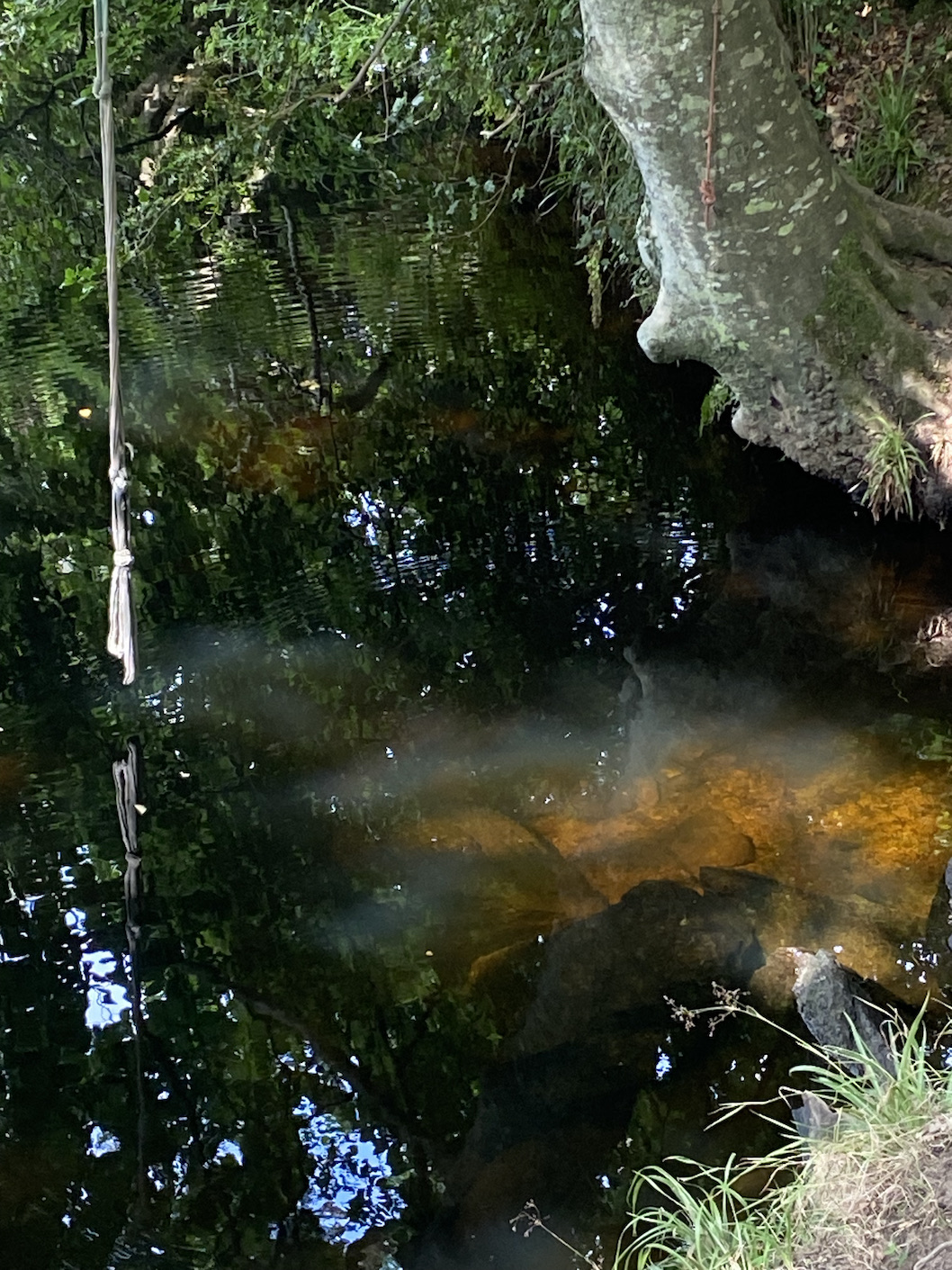


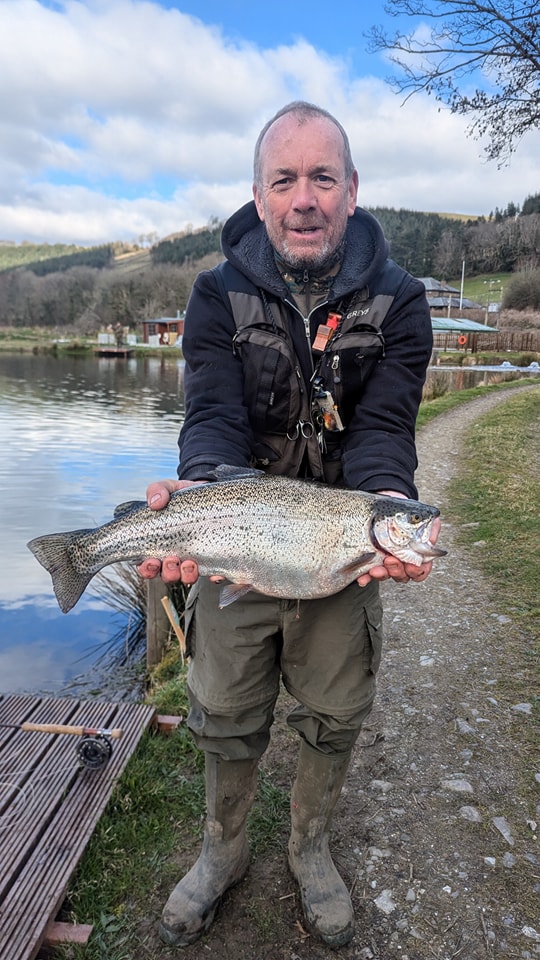







The 2025 trout fishing season got underway on rivers across North Devon on March 15th and with rivers in prime condition it was good to see that several anglers had enjoyed success as I glanced through my social media accounts.

Whilst I would have enjoyed a day on the river I was privileged to have been asked to be guest speaker at the Taw Fishing Club’s AGM at the Fox & Hounds Hotel at Eggesford.
The Taw fishing club was established in 1912 and is a flourishing club of predominantly wild brown trout devotees. The AGM signals significant change with long standing and hard-working Chairman Professor Gordon Murray standing down after several years of sterling service. In his passionate closing speech Gordon gave his thoughts on the past present and future of the club emphasising the need for younger anglers to gradually replace the aging dynamic of the club. The club is at present in a very healthy and robust state with five miles of excellent trout fishing.
Conservation of the river and its eco system were key throughout the AGM and as I attend numerous such meetings across Devon I realise just how big a part anglers play in helping to maintain vital habitats across the region. There was also conversation about how we need to work with other interested parties to protect our rivers. Surfers Against Sewage and Wild Swimming Groups have certainly done a great deal to ensure that rivers are now higher on the political agenda and we should give them credit for their success where we have sometimes failed to get the message across.
My own talk was delivered to an attentive and polite audience with a degree of trepidation for following Gordon Murray a well-respected and eloquent speaker was a little daunting. My bullet point notes are included below :-
Notes for talk
After a moment of silence I was relieved when the membership embarked upon a lengthy discussion stimulated by my rambling delivery. I sincerely hope some of the ideas generated will sow seeds for future generations to immerse themselves in this wonderful pastime.

At the Arundell Arms opening day was celebrated in style with a gathering of keen anglers enjoying conversation, complimentary coffee and bacon rolls before a traditional toasting of the river. Several beautiful wild brown trout were tempted by anglers despite the cold North East wind.